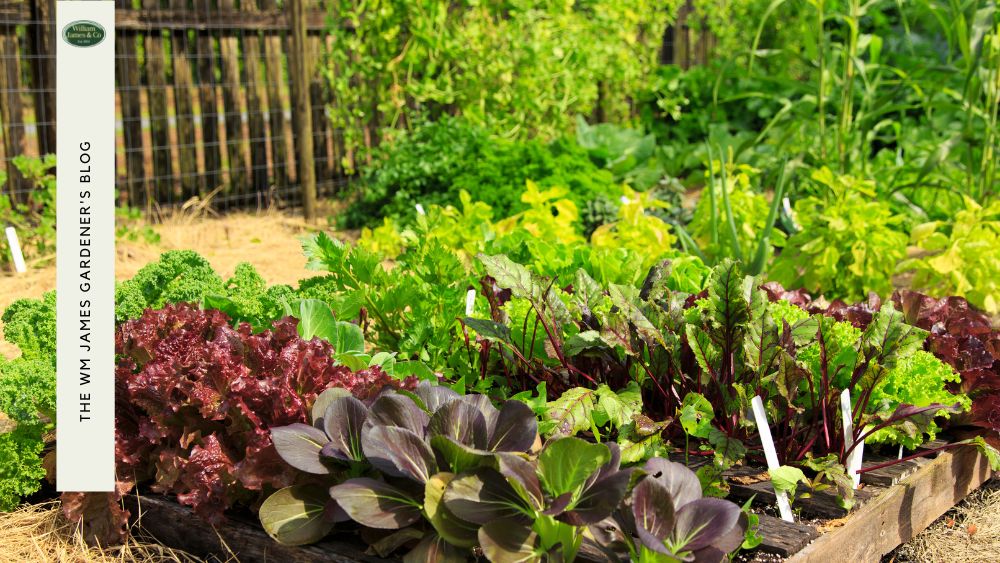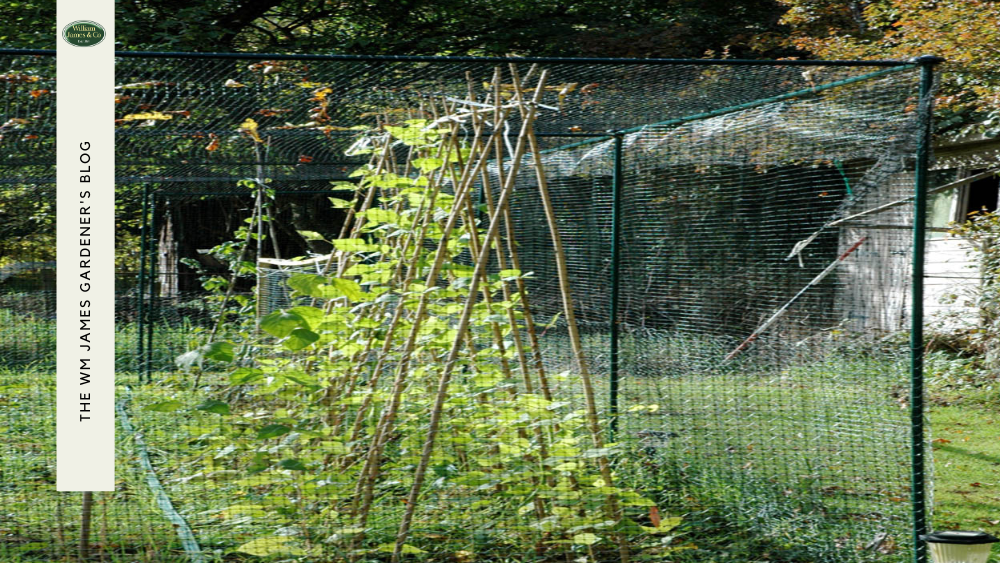We use cookies to make your experience better. To comply with the new e-Privacy directive, we need to ask for your consent to set the cookies. Learn more.
Plant Protection Netting We Recommend For Your Garden (& How To Use It)
- Admin
- WM James Gardening Blog
- 7 Mar 2023
-
7views

Looking to protect your plants & gardens from birds, animals & pests? We offer a wide range of plant protection netting solutions to keep your plants safe.
Unfortunately for us gardeners, there is all manner of critters that can wreak havoc on our gardens. However, plant protection netting offers a perfect solution for ensuring your prized plants and vegetables stay safe from pests, birds, insects, and other animals.
Our experts have compiled a wide array of tips, tricks, and tools that we can use to ward off these pests and installing plant protection netting is one of the best methods for protecting your plants from wildlife.
Whether you want to protect vegetables or garden seedlings yet to reach maturity, plant protection netting should be your go-to solution.
Plant Protection Netting
To use plant protection netting correctly, it’s essential to ensure it covers all parts of the plants, including the tops and sides. If you don't, then the pests won't be completely blocked from your garden.
Our range of plant protection netting includes everything from lightweight cloche garden covers to heavy-duty plant protector nets – all designed to provide your plants with the protection they need to survive and thrive.
Read through our list of your best plant netting suitable for protecting all of your crops, and buy your online netting cut to any size required!
Bird Netting
Let’s start with birds and the best way to keep them out. Birds can do a lot of damage to your garden, from eating your crops to leaving droppings, which are caustic and can have an impact on your soil.
Plants that are susceptible to bird damage include:
- Brassicas
- Sweet peas
- Spring flowers
- Fruit trees
If you want to protect your plants from birds, bird netting is a great way to do so. There are different mesh sizes available depending on the size of the bird that is causing the most problem, but 20mm is generally ideal as it can protect against even the smallest.
It works because they are unable to get through, and they cannot get a foothold.
Bird netting is quite heavy-duty and sturdy, and it is best to hang it from a structure such as a fruit cage. However, you can also look at hanging it over stakes or hoops.
We have a whole array of bird netting ideal for keeping out those feathered friends, and your plants will be safe in no time!
Butterfly Netting and Insect Netting
Butterflies and insects can be some of the trickiest pests to deal with. In addition to eating your crops, they can also leave pollen that can spread plant diseases.
You’ll want to avoid using any pesticides or chemicals, and netting options are perfectly effective at keeping these creatures out of your garden.
Plants that are susceptible to butterfly damage include:
- Cabbages and cauliflower
- Kale
- Swede and turnips
As you might expect, a smaller mesh size is ideal for keeping butterflies and insects out. If you are only looking at butterflies, you can look at a 7mm mesh. But if you are dealing with insects, too, then you should think about a 1.35mm mesh.
Fine insect protection netting is delicate enough that you can lay it directly over your plants and secure it with stakes. It will allow moisture and sunlight through and keep those pesky critters out and off your crops.
Browse through our range of insect netting and butterfly netting today to keep your plants safe from these critters!
Windbreak Netting
Netting can also help you to protect your plants when the weather starts to change. Many garden plants and crops love a bit of sunshine, but if you are dealing with too much sunlight, windbreak netting can help.
It can also, as the name suggests, protect your plants from the wind and be perfect for a cloche garden patch.
The ideal mesh size for windbreak netting is small because it works by absorbing the impact of the incoming wind and sunlight and only allowing a small amount through to the garden behind it.
You can hang windbreak netting from posts around an allotment or over a cage if you want to provide maximum coverage.
Our windbreak netting is available in a 50-metre garden netting roll, so you'll have plenty of coverage.
Garden Fleece Netting
While windbreak netting protects your garden from wind and sun, garden fleece netting is there to keep the worst of the cold winter weather away from your crops.
Fleece netting is porous, so it lets water and air through, but it works like windbreak netting to deflect the cold fronts, and it keeps raindrops from getting through, which can help cut down the risk of disease. It can also protect your plants from frost and hail.
You will want a small mesh size to keep as much warmth in as possible. When the temperature dips below zero, it’s best to use two or three layers to insulate your plants properly.
We have all sorts of different garden fleeces, from maxi fleece by the metre to frost jackets for your smaller plant pots. The ultimate protection against the cold weather!
How to Recognise Signs of Plant Damage
The earlier you can spot any damage amongst your plants, the better., since you can tackle the problem before it causes your shrubs to die off.
You should be able to reverse most signs of damage and take steps to protect your plants from it happening again.
Here are a few of the most common signs of plant damage.
Discoloured or Wilted Leaves
These can often be a sign that your plants have been exposed to too much sunlight or they've not had enough water.
Windbreak netting is a good option to help prevent this because it keeps a lot of wind and excess sunlight off your plants.
Missing Leaves
When it comes to houseplants, missing leaves can be a sign of over-watering. But when it comes to plants in your garden, it is a classic symptom of wind damage. If you have left your garden exposed to the elements, then leaves may fall off.
To keep your plants safe from heavy rain and wind, look at windbreak netting or fleece netting.
Unusual Marks, Spots, or Discolourations
Marks, spots, and discolouration can be a symptom of a lot of different issues, but if you have noticed this in your garden, it may be a sign that you have pests. Insects can leave a lot of unusual marks or spots, so it is worth investing in fine mesh netting to keep them out.
Discolouration can also be a sign that your plants have been scorched by over-exposure to sunlight. Wind-break netting can help with this.
Unusual Growths or Deformations
Insects could be one of the main causes of this. Butterflies can leave pollen behind, which can cause issues, and the damage caused by insects can cause them to grow back in a way they normally wouldn’t.
If you think that insects have been wreaking havoc in your garden, look at our butterfly netting or fine insect netting.

Give Your Plants the Best Protection with WM James Garden Nets
We all want to take the best care of our garden - and netting is an easy and safe option. It can protect your plants from a wide range of different pests and weather conditions, and it will do so without causing damage to your plants or the local wildlife.
Whether you are worried about birds coming to feast on your crops, insects going to work on your leaves, or excess wind, sun or frost damaging your plants, there are netting solutions out there.
It can be tricky to know what the best netting solution is for you, but identifying the problem that you want to address is the best first step.
FAQs
How do you protect plants with netting?
Netting makes sure that your plants are getting all of the sunlight and moisture they need while keeping them safe from everything else. Bird netting stops any feathered friends from getting in, while fine mesh insect netting has small enough holes to stop garden pests.Netting can also keep your plants warm in winter and shield them from excess sunlight and wind.
What is the best fabric to protect plants from frost?
The best fabric to protect plants from frost is fleece netting. It allows air and moisture to get through, but it keeps the soil damp instead of freezing. Raindrops air drained away to stop any excess dampness and subsequent diseases.
Our horticultural garden fleece is made from 17gsm polypropylene, and it also protects plants from garden pests during the summer months.
What is the best material for covering plants?
When you are covering plants with netting, you want to be sure that it is not going to be easily damaged by garden pests or weather conditions and that it is not susceptible to dampness or rot.
At WM James, we use polyethylene for our butterfly, insect and bird netting that is UV stabilized to ensure that excess heat will not affect it.
Should I put netting over my garden?
Putting netting over your garden is a very good idea if you are worried about pests or adverse weather conditions. There are so many different things that it can protect it from and provide valuable plant cover with all year round.
A garden netting roll can keep out birds, butterflies, and insects and protect them from heat, wind, and frost.













